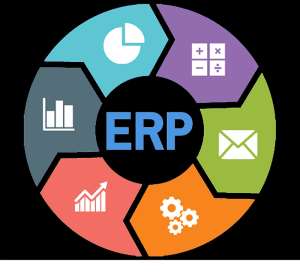In the first article in a series of 3 (28 March 2022) it was discussed how ERP systems provide an integrated solution to support the key business processes of an organization. In this second article, we are going to see what system is best for your business and what the typical risks are if you decide on such an option.
It is good to start with a caveat: 80 % of all ERP implementations fail!
It is an intriguing question. How is it possible that robust systems, provided by well-renowned software vendors who have been in the market for so many years, seem to cause such a high probability of not meeting the expectations of their customers. How is it possible that many ERP projects stop after a time-consuming and expensive implementation phase?
As the CFO/CIO of a large government agency in Europe, one of the authors of this article was experiencing similar worries. Coming into a new job, she was finding many highly paid consultants building “parameterized modules” of one of the large ERP systems. Several different modules were supposed to accommodate the key business processes as well as some supporting processes, like procurement and financial accounting. In this case, the ERP vendor had been able to convince the agency that the modules would be a good fit for them, after some changes. These changes then became bigger and bigger, and eventually, the system never worked and was aborted.
Literature on the topic will point at two key problem factors here: alignment and people.
Alignment: does this ERP technology fit your business process?
There are many ERP systems on the market, and the first question to answer is: what does your production process look like and how do you want it to develop soon (1-3 years)? Every organization has its unique way of doing things, and if you start using an ERP module there are only two options: you decide to change your business process to fit the ERP module perfectly or ask its vendor to change this module to fit your business process. While most resellers of ERP solutions will tell you that it is possible to set the parameters of their product in many ways, this may still be quite time-consuming (hence leading to considerable implementation consultancy costs). Another option is to have various parts of the module being tailored for you by re-writing the software. Here the question would be: if you need to do that, why get an ERP in the first place?
People: most of them do not want to change - not today and not tomorrow
This brings us to the second factor that makes ERP implementations difficult. Usually, top management will decide that the digital transformation of a department is going to generate efficiency, quality improvement, better management information, or innovation. All of these add up to the positive business case of the investment in a new ICT system. But they inevitably also entail changes that can be threatening to both middle and lower management and people on the work floor. Will I be able to work with the system? Will the software replace my job? Is the boss going to follow me wherever I go and see how fast we are working?
While any new software introduction may evoke adversity, things become even more complex when the ERP system is going to be used to introduce considerable innovation. Unfortunately, the bigger the potential gain, the more challenging it will be to engage all the personnel involved. People will find it hard to imagine what the new way of working will look like and will be making change difficult. IT systems make it much more difficult to be sloppy, cheat, steal or be lazy.
Now what?
After considering the key success factors for a successful ERP implementation, your management team needs to be focused and careful. It needs to consider what the scope of the transition should be and what exactly they want to achieve with this investment. Before engaging with any vendor, be aware that there are many options to choose from. Multiple generic and hundreds of industry-specific “best of breed” solutions are on the market. It is wise to get an independent consultant to help you choose the best option. In the end, you may choose an ERP system or go for an alternative option such as a short list of affordable specialized software products with good APIs to be connected, or tailor-made software for some of your special primary business processes.
Authors: Diana van der Stelt













 Sompaonline.com offers its reading audience with a comprehensive online source for up-to-the-minute news about politics, business, entertainment and other issues in Ghana
Sompaonline.com offers its reading audience with a comprehensive online source for up-to-the-minute news about politics, business, entertainment and other issues in Ghana